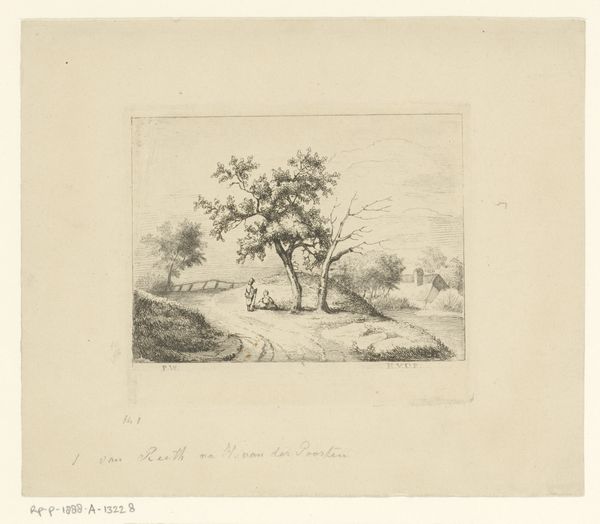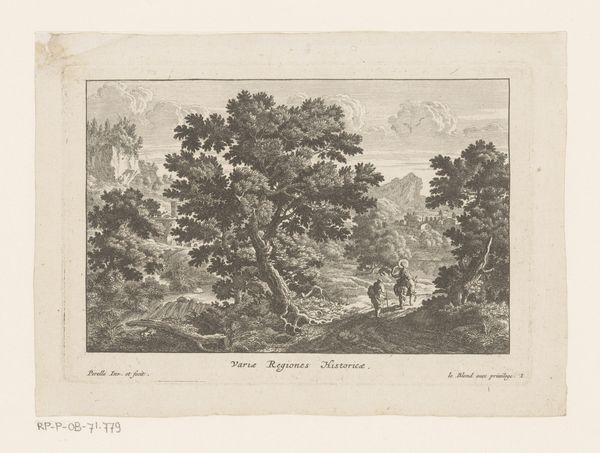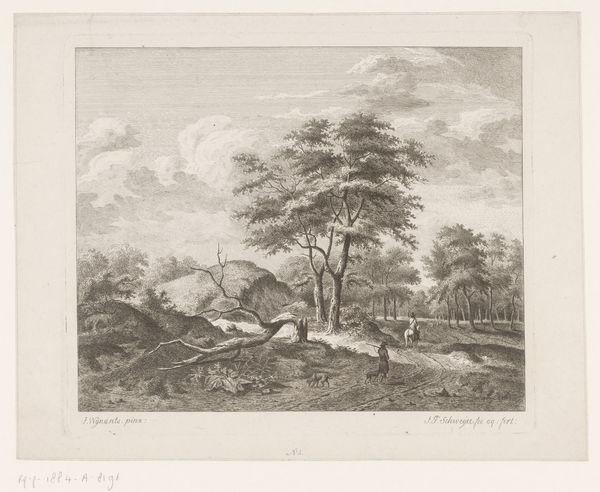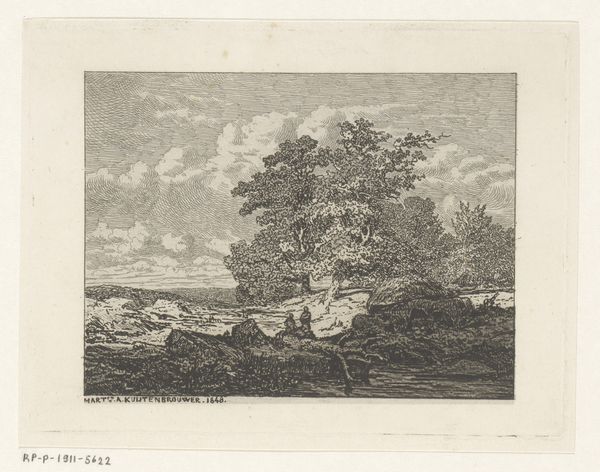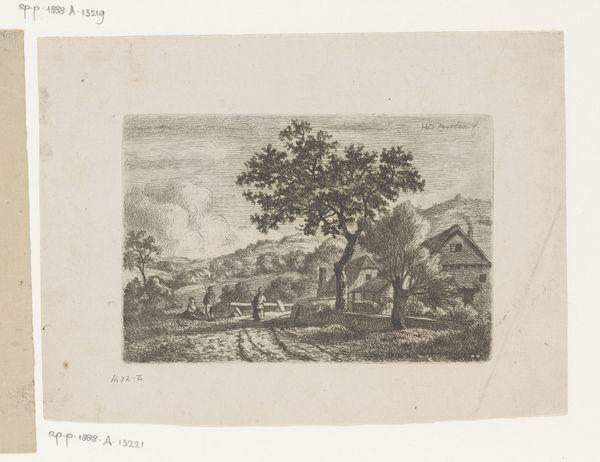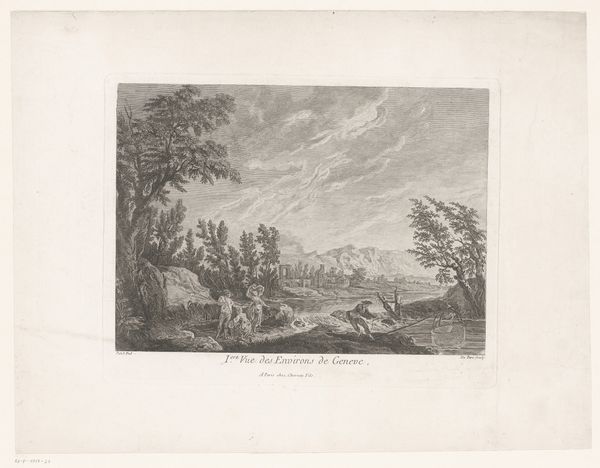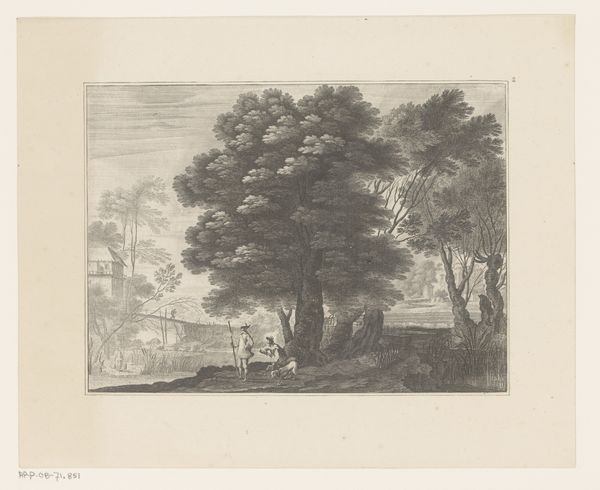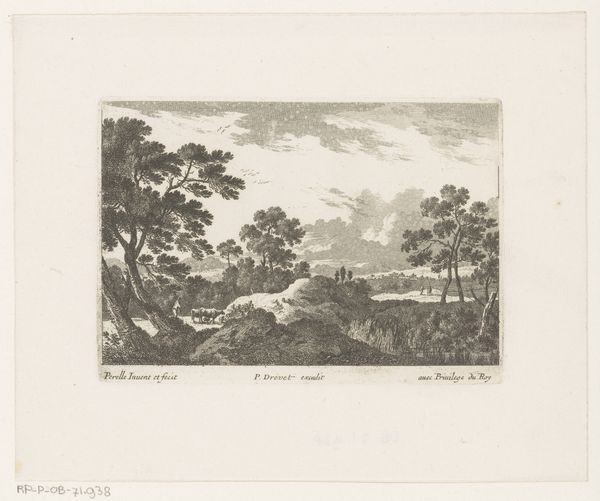
drawing, print, etching
#
drawing
# print
#
etching
#
landscape
#
realism
Dimensions: height 100 mm, width 143 mm
Copyright: Rijks Museum: Open Domain
Hendrik Jozef Franciscus van der Poorten created this etching, “Man en vrouw in gesprek bij een dorp,” around 1861. Etching involves drawing an image into a protective ground, usually wax, on a metal plate. The plate is then immersed in acid, which bites into the exposed lines, leaving an incised image. Ink is applied to the plate, and the surface wiped clean, leaving ink only in the etched lines. The image is then transferred to paper under high pressure. Van der Poorten’s skill in this process allowed him to capture not just the scene but also the textures of the landscape - the rough bark of the trees, the thatched roofs, and even the cloudy sky. By embracing printmaking, Van der Poorten was participating in a rapidly evolving visual culture, where images could be widely distributed and consumed. Printmaking democratized art, making it accessible to a broader audience beyond the wealthy elite. Considering the materials and processes used gives us a deeper appreciation for the artist's skill and the artwork's cultural significance.
Comments
No comments
Be the first to comment and join the conversation on the ultimate creative platform.
